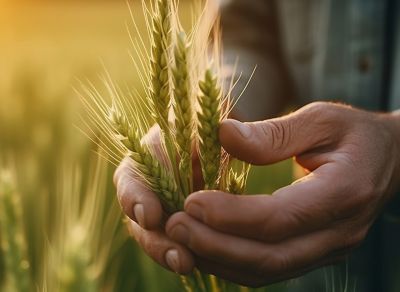Auxins
Auxins are commonly found in the growing regions of the plant such as the tip of the leaves, the tip of the shoot or the buds. When auxins accumulate in the plant cell, its growing regions elongate, i.e., grow taller.
Gibberellins
Gibberellins also cause cell elongation but are usually concentrated on the stem in the areas where new leaves, also known as nodes, are formed. Under the effect of gibberellins, the stem between the nodes elongates, i.e., the internode distance becomes longer. The more gibberellins, the longer the plant.
Gibberellins also influence seed germination. A seed will only start growing when enough gibberellins accumulate.
Gibberellins are present across all growth stages of the plant. Their concentration is highest during periods of rapid growth (Feekes 4‒6, Zadoks 30‒32).
Cytokinins
Cytokinins promote cell division. If cytokinins are present in one cell, they divide it into two cells. Cell division means new cells and the emergence of new leaves, fruits and branches (tillers).
Abscisic acid
During periods of draught, abscisic acid will accumulate at cell borders to keep the stomata of the plant cells closed. Stomata are small openings in the leaf that allow it to breathe but simultaneously cause it to lose water. Another function of abscisic acid is to inhibit seed germination (e.g., until growing conditions are optimal).
Ethylene
Ethylene is a gas that, once released, breaks down the cell walls of a fruit, making them softer. Ethylene also helps release sugar, making fruit taste sweet. The most common use of ethylene is on bananas, which are commonly shipped green from country of origin and given ethylene treatment to ripen shortly before reaching supermarkets. In cereals, ethylene induces ripening and stops further plant growth.







